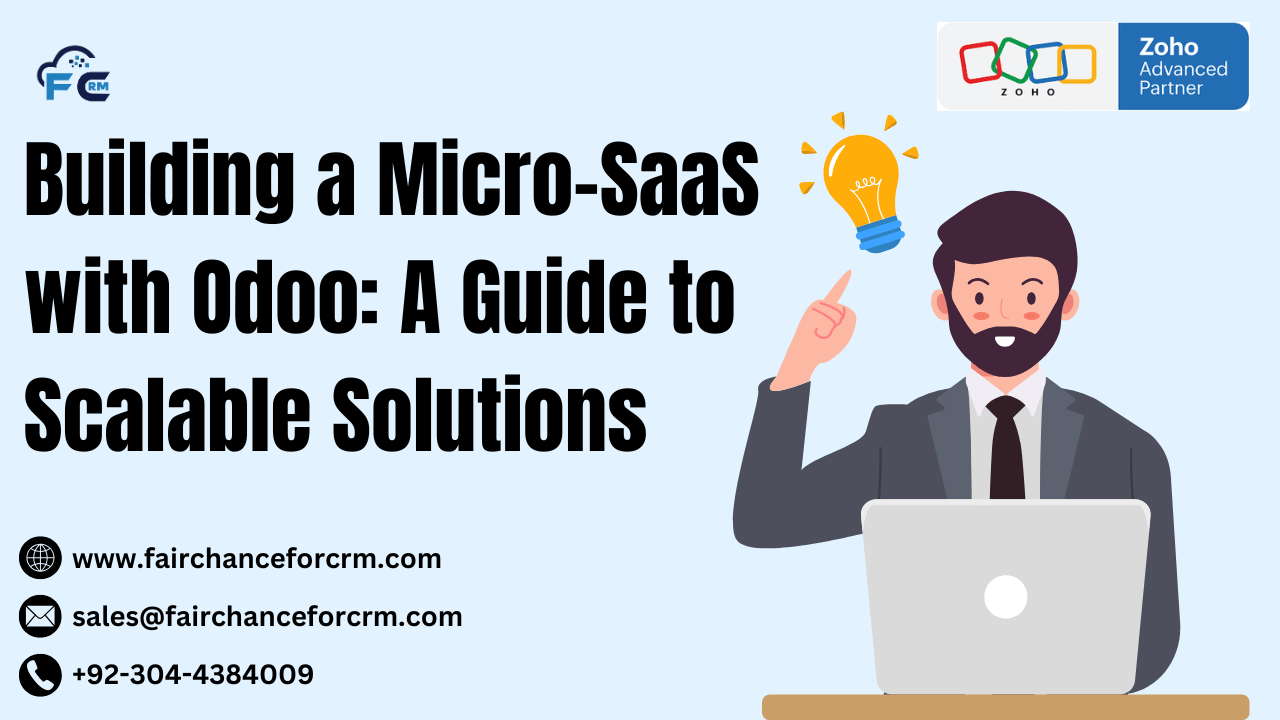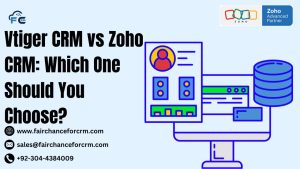In the modern business landscape, Micro-SaaS with Odoo has emerged as a popular business model for entrepreneurs who want to build scalable software as a service (SaaS) applications, typically targeting niche markets.The idea behind Micro-SaaS is to develop highly targeted, lightweight applications that address certain issues for a target user base. Unlike large SaaS platforms, Micro-SaaS products tend to have simpler functionalities, smaller user bases, and often require fewer resources to maintain.
Odoo—a comprehensive suite of business applications—can be a great platform for building and deploying Micro-SaaS applications.
Its versatility, large ecosystem of pre-built modules, and modular architecture make it an efficient tool for starting a SaaS business at a reasonable cost.
We’ll look at how to use Odoo to develop scalable applications and Micro-SaaS solutions in this post.
Also Read:
- Odoo 17 Documentation
- WebSocket in Odoo
- ZPL Designer in Odoo
- Command Update Odoo Module Docker
- FAIRCHANCE FOR CRM Best Odoo Migration Service Provider in USA
What is Micro-SaaS with Odoo?
Micro-SaaS refers to a SaaS product with the following key characteristics:
- Niche Focus: It targets a very specific market or addresses a specific problem.
- Small Team: Usually run by a small team or even a solo founder.
- Scalable and Automated: The product can scale with minimal operational effort once it’s built.
- Low Overhead: Micro-SaaS businesses often operate with lower costs, focusing on automation and a small customer base.
- Recurring Revenue Model: Most Micro-SaaS businesses are built on subscription models.
Why Choose Micro-SaaS with Odoo?
Accounting, sales, inventory, CRM, and project management are just a few of the business modules available in Odoo, an open-source ERP that can be used as the basis for creating Micro-SaaS solutions. Odoo is a great option for starting your own Micro-SaaS for the following reasons:
Customizability: Odoo’s modular nature allows you to pick and choose the features you need for your Micro-SaaS product. You can start small with just a few key functionalities and expand as needed.
- Pre-built Functionality: Odoo provides ready-to-use modules for common business needs (such as invoicing, subscriptions, and CRM), which can save you significant development time. You can use these modules as the core for your Micro-SaaS application, tailoring them to your target market.
- Subscription Management: Odoo includes an in-built subscription module, which is crucial for any SaaS business.Billing cycles, invoicing, subscription plans, recurring payments, and client subscriptions may all be managed using this functionality.
- Multi-tenant Architecture: Odoo supports multi-tenancy, meaning you can run multiple instances of the same application for different customers.V
- Scalability: Odoo’s architecture is designed to scale. As your Micro-SaaS business grows, you can easily add new features, modules, and users without worrying about significant technical debt.
- Cloud-Ready: Odoo can be hosted both on-premise or in the cloud, providing the flexibility to run your Micro-SaaS application in the most appropriate environment. Cloud deployment allows for better scalability and lower operational overhead.
Building a Micro-SaaS with Odoo: A Step-by-Step Guide
Step 1: Define Your Niche and Product Offering
The first step in creating a Micro-SaaS product with Odoo is defining your niche market and understanding the pain points of your target audience. For example:
- Inventory management for small retailers.
- CRM solutions for freelance professionals.
- Project management tools for small teams.
- Subscription billing and invoicing for service-based businesses.
After identifying your niche, ascertain which attributes are most crucial to your target audience. Your Micro-SaaS application can be built around Odoo’s CRM, Sales, Accounting, and Subscriptions modules.
Step 2: Customize Odoo for Your Product
Since Odoo is open-source, you can customize the platform to fit the unique needs of your SaaS offering:
- Develop Custom Modules: You can develop new features or adapt existing ones to suit your Micro-SaaS business.
- Design Custom Views: Tailor Odoo’s user interface (UI) to make it user-friendly for your target audience. This can include custom dashboards, forms, and reports.
- Branding: Customize the look and feel of your Odoo application to reflect your branding. You can modify themes, logos, and the overall style.
Step 3: Set Up the Subscription Model
As a SaaS business, managing subscriptions is key. Odoo has a built-in Subscription Management module that allows you to:
- Create subscription plans with different billing cycles (monthly, yearly, etc.).
- Automate invoicing and payment processing.
- Set up recurring revenue models and manage renewals.
- Track subscription metrics such as churn rate and customer retention.
You can also integrate with payment gateways like Stripe or PayPal to handle payments securely.
Step 4: Deploy Odoo for Multi-Tenant Use
To launch your Micro-SaaS as a multi-tenant solution (serving multiple customers), you’ll need to:
- Configure Odoo’s multi-company functionality, where each client gets its own separate data and configurations.
- Use Odoo.sh for cloud deployment, which handles hosting and scaling while giving you full access to Odoo’s features.
Ensure each tenant has access only to their data and that the architecture supports scaling as new users and customers sign up.
Step 5: Automate Processes
Micro-SaaS with Odoo offers many tools to automate business processes, such as workflows, automated emails, and notifications. You can:
- Set up automatic invoicing and subscription renewals for your customers.
- Create email templates for notifications (e.g., payment reminders, trial expiration).
- Automate sales workflows to reduce manual effort and improve customer experience.
Automation is crucial for Micro-SaaS businesses because it reduces operational overhead and keeps costs down.
Step 6: Marketing and Customer Acquisition
With your Micro-SaaS platform up and running, it’s time to attract customers. Some strategies include:
- Free Trials: Odoo makes it easy to set up a trial period for your product. You can offer users access to premium features for a limited time to encourage them to sign up for a full subscription.
- Marketing Automation: Use Odoo’s Email Marketing and CRM modules to build and nurture customer relationships. Automate lead nurturing through email campaigns, webinars, and special offers.
- Integrate with Social Media: Set up social media integrations with platforms like Facebook, Twitter, and LinkedIn to engage potential customers.
Step 7: Monitor and Scale
Odoo’s reporting and analytics tools allow you to monitor key performance indicators (KPIs) such as:
- Customer acquisition costs
- Revenue growth
- Churn rate
- Monthly recurring revenue (MRR)
Use these insights to make data-driven decisions and continually improve your SaaS offering. Odoo can also scale automatically in cloud deployments, ensuring that you can handle increasing numbers of customers.
Example: Building a Micro-SaaS Billing Application with Odoo
Let’s say you want to build a Micro-SaaS product for subscription billing and invoicing. This would cater to small businesses and freelancers who need an easy-to-use platform for managing their billing cycles.
Modules to Use:
- Subscriptions: For recurring billing.
- Accounting: For tracking invoices, payments, and financial reporting.
- CRM: To manage customer relationships.
- Sales: To handle one-time payments and upsell opportunities.
Customization:
You could create a custom module that allows users to:
- Create custom subscription plans.
- Track customer payments.
- Set up automatic reminders for overdue payments.
With these features in place, customers can sign up, select a plan, and start receiving automated billing and payment management.
Conclusion
Odoo is an ideal platform for building Micro-SaaS applications due to its modular, flexible nature and built-in tools that simplify subscription management, billing, automation, and customer management. By customizing Micro-SaaS with Odoo to create a niche SaaS product, you can offer a scalable and cost-effective solution to your target audience.
Whether you are building a subscription-based platform, a CRM system for small businesses, or an invoicing tool, Odoo provides the necessary tools to create a robust Micro-SaaS product that can grow with your business. With low overhead costs and automated processes, Odoo allows you to focus on the core value of your product while ensuring smooth business operations.
For more information about the Micro-SaaS with Odoo, visit this link.
If you want to Free Trail Zoho, click on this link.




